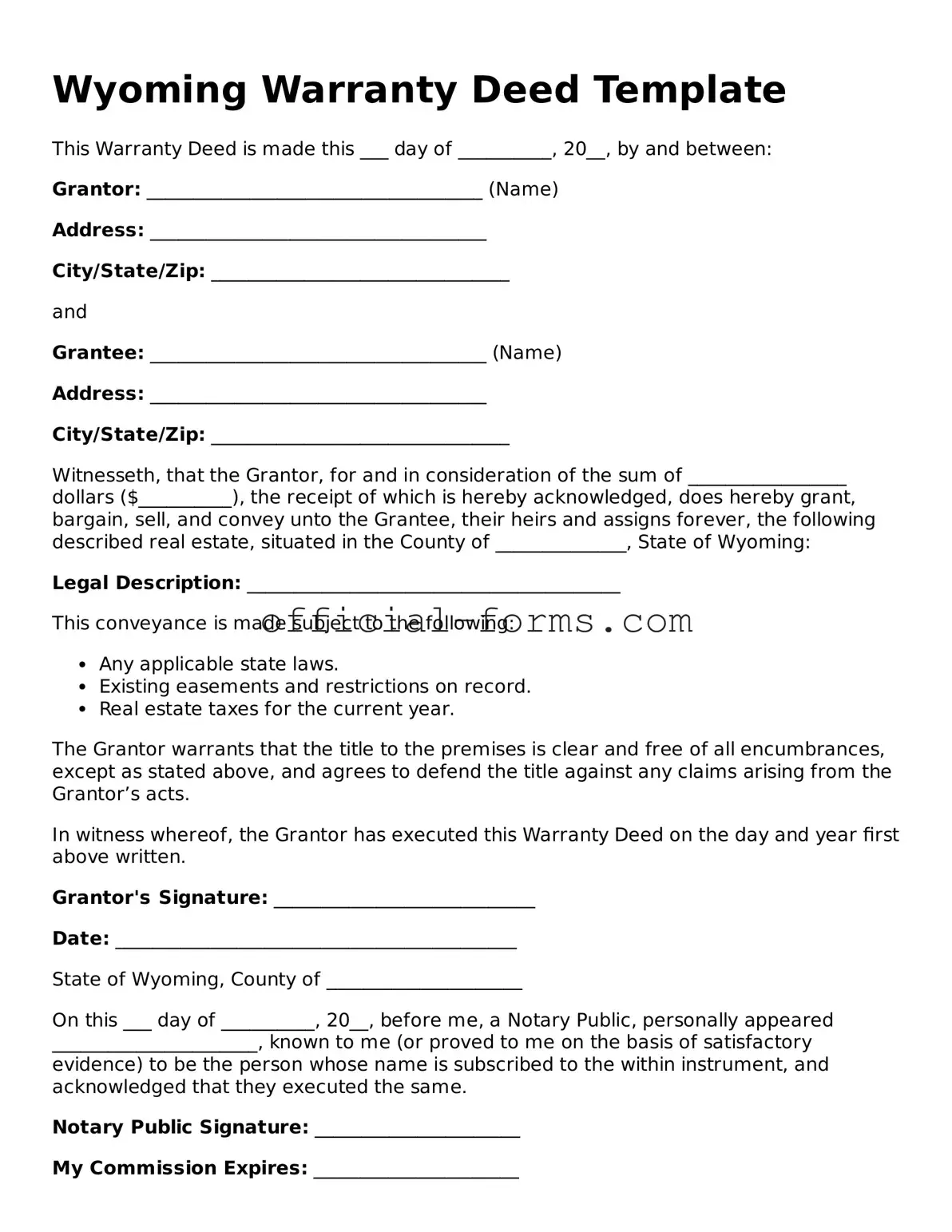When it comes to transferring property ownership in Wyoming, understanding the Wyoming Deed form is crucial for both buyers and sellers. This legal document serves as the official record of the transaction, outlining the details of the property being conveyed and the parties involved. It typically includes essential information such as the names of the grantor (the person transferring the property) and the grantee (the person receiving the property), a clear description of the property, and any relevant conditions or restrictions tied to the transfer. Additionally, the deed must be signed and notarized to ensure its validity and enforceability. Familiarity with this form can help prevent misunderstandings and disputes down the line, making it an essential tool in real estate transactions. Whether you’re a first-time buyer or an experienced seller, grasping the nuances of the Wyoming Deed form can empower you to navigate the property transfer process with confidence.
